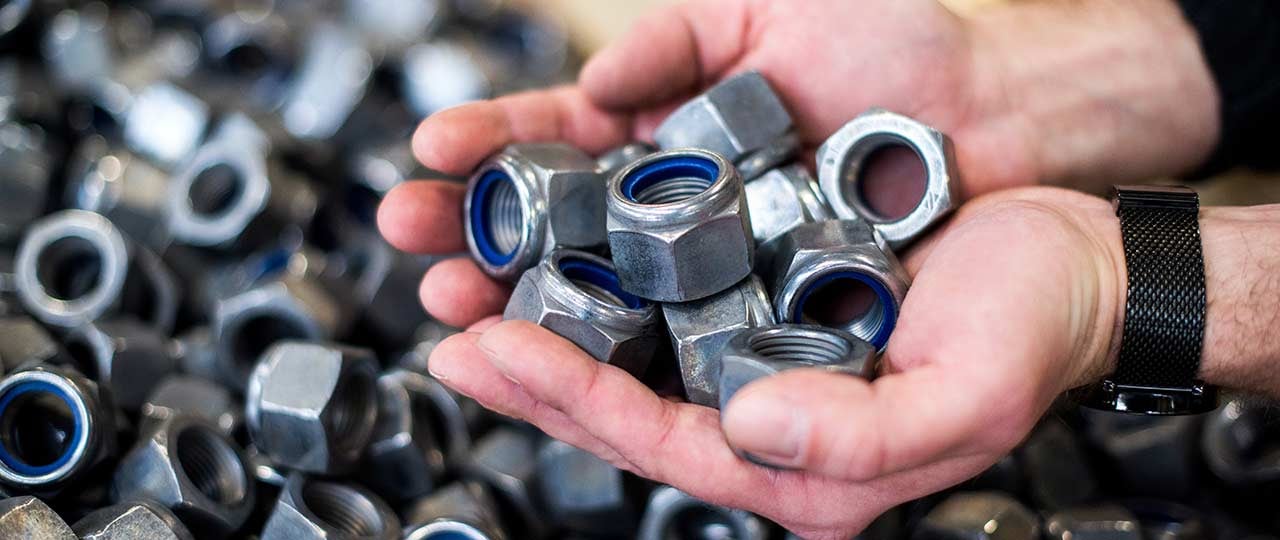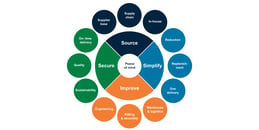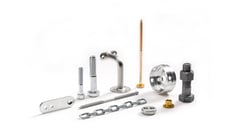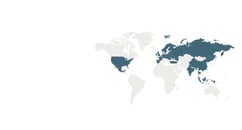- Insights
- The Solutionists Hub
- What is Sustainable Sourcing?
What is Sustainable Sourcing?

Sourcing your bolts, nuts, screws, fasteners and other types of C-parts sustainably is a vital first step in creating a sustainable C-parts supply chain. All stages of a supply chain, from raw materials extraction to shipping, can be sound from an environmental perspective – but if the supplier you source the parts from is not economically and socially sustainable, the supply chain won't be either.
In my experience, many manufacturers have significantly improved how they think about the environment. Many track their emissions and work to reduce them, and others have invested in improving waste management to keep their environmental impact low.
Many also want to improve their sustainable C-parts sourcing practices but often struggle. Many European manufacturers' C-parts suppliers are far away, typically in Asia. There's a language and cultural barrier between them, as well as a very long distance. Additionally, the manufacturer may have a large number of C-parts suppliers to handle. These factors make it a huge challenge to ensure that the suppliers live up to the sustainability policies and targets that have been decided at the head office.
In this article, I will explain what sustainable sourcing means for you, go into some more difficulties that companies face when sourcing components sustainably, and present some potential solutions for purchasers who want to make their C-parts sourcing more environmentally, socially and economically sustainable. If you're looking for more general knowledge, dive into the guide to C-parts supply chain sustainability for more information.
What is sustainable sourcing?
Sustainable sourcing, sometimes referred to as sustainable procurement for some types of products, is defined by the business sustainability rating organization EcoVadis as:
"The integration of social, ethical and environmental performance factors in the process of selecting suppliers."
If you're a purchaser, you likely already have a list of requirements you consult when finding new suppliers. Sustainable sourcing simply means using environmental, social and economic sustainability as additional dimensions in your decision-making process.
How is sustainable sourcing different from traditional sourcing?
Making the right decisions when sourcing C-parts suppliers is essential for a smooth-running supply chain and a functioning production process. Although C-parts are small, they are crucial components – and no one wants to be forced to stop production due to a sudden shortage of bolts. Purchasers and sourcing managers work differently in different industries, but some of the key things they all look for when sourcing suppliers are:
- Quality – Do the parts meet the correct standard for the application?
- Lead times and delivery – Can this supplier keep up with our planned production schedule?
- Cost – Are the supplier's prices competitive, and more importantly, is the total cost of working with them acceptable?
- Stability – Will we be able to rely on this supplier for vital parts in the long term?
- Capacity – Are their minimum order quantities too high? Or will they be able to meet our level or demand?
However, when starting to source sustainably, your sourcing team will have to ask some more questions:
Social sustainability
- Are the supplier's staff paid a fair wage, whether they work in production or another department?
- Do they have the ability to collectively bargain and form trade unions?
- Do they have access to the proper training and personal protective equipment (PPE) they need?
- Are the correct safety measures in place? For example, routines for handling dangerous goods or fire prevention measures.
- Does the supplier comply with the relevant labor guidelines, for example, those set by the International Labor Organization (ILO) or the OECD?
Environmental sustainability
- Are hazardous substances or chemicals disposed of correctly?
- What levels of air, water and land pollution are caused by the supplier's operations?
- How much greenhouse gas is emitted by the supplier's operations, directly or indirectly?
- To what degree does the supplier use renewable energy at their facility?
- Does the supplier have efficient and consolidated sustainability practices?
Economic sustainability
- Does the supplier's business create a positive economic impact on its surrounding community?
- Would economic success for this supplier be likely to come at the expense of environmental or social capital?
- Does the supplier take a long-term view of its business rather than only focusing on short-term profits?
How do companies make their sourcing more sustainable?
Audit existing suppliers
In the early stages of a company-wide sustainability shift, the first step is to see how your existing suppliers match up against the questions listed above. It's impossible to track progress without knowing your starting point, so assessing your current situation may reveal some weaknesses and provide early areas of improvement.
Pay a visit
This might not always be simple, particularly if your C-parts suppliers are located on another continent. But it may be worthwhile if it helps you verify their sustainable performance in line with your requirements. Additionally, you'll have a better chance of strengthening your relationship, making it easier if you later need to cooperate with them in other areas of your sustainable supply chain.
Get a local supply chain partner
Visiting suppliers helps you get a picture of their operation, but it's not always something you can do multiple times a year, especially with international suppliers. Many companies with a supplier base in the Far East benefit from working with a local supply chain partner who has contact directly with the suppliers on their behalf. The partner benefits from a shared language and culture with the supplier, and they're a lot closer as well – making it possible for them to make regular, less formal visits to ensure supplier compliance with your sustainability goals.
To learn more about sustainability in C-parts supply chains, take a look at our extensive guide on the topic – and download the guide to trends in sustainable sourcing to get some practical guidance on what your company may be dealing with soon.
Get the guide to sustainability trends for manufacturers
If you want to keep expanding your knowledge around the sustainability trends that your company might soon have to deal with, download The Manufacturer's Guide to Sustainability Trends below. It covers topics around reshoring, regulation and circularity and should get you prepared for future pressures on your C-parts supply chain.
Get new knowledge every week!
Related
-
By Sergio BrambilaSustainability targets and KPIs to implement in the purchasing department
-
By Kadi MeriväljaC-Parts Purchasing: Handling Your Sustainable Purchasing Policy
-
By Patrik Lundström TörnquistSustainability Challenges With C-Parts, and How to Manage Them
-
By Carina LööfSustainable C-Parts: What You Need to Know
-
By Niklas LindsköldCBAM: How will it affect European manufacturers?
-
By Niklas LindsköldHuman rights due diligence: Is your supply chain under control?
-
By Niklas LindsköldChemical compliance: What manufacturing companies need to know
-
By Niklas LindsköldConflict minerals: How to avoid them in your manufacturing operation










